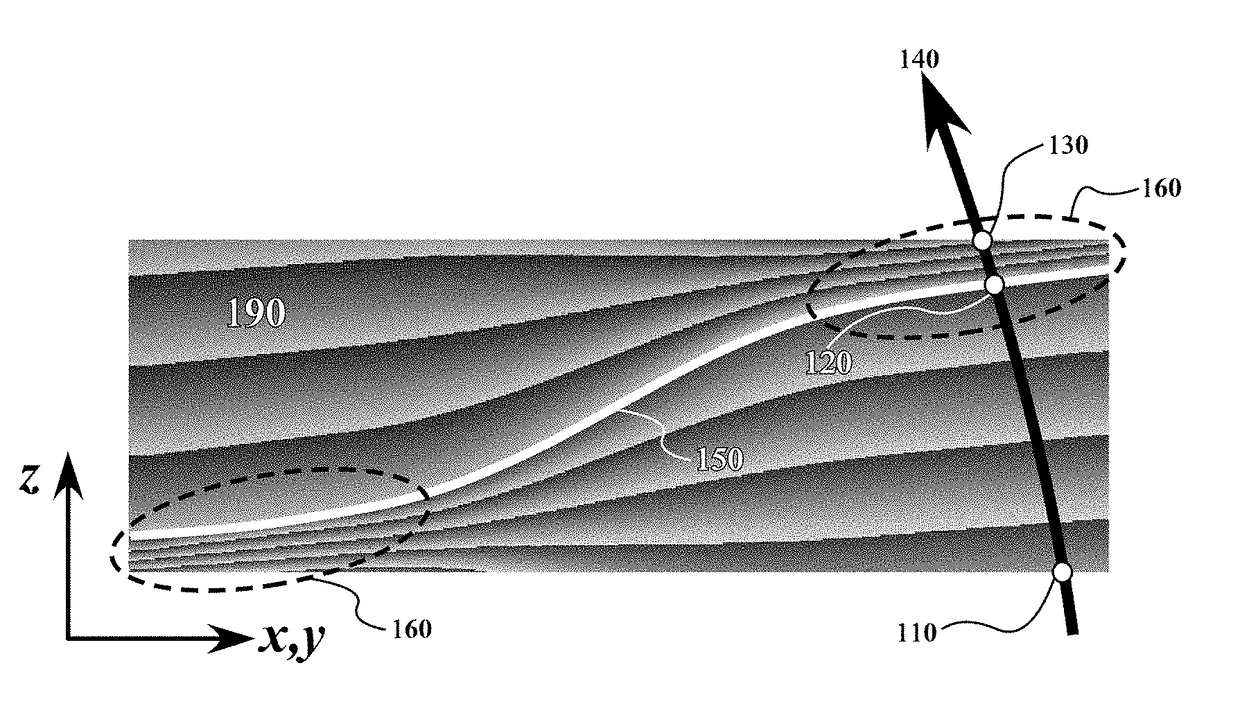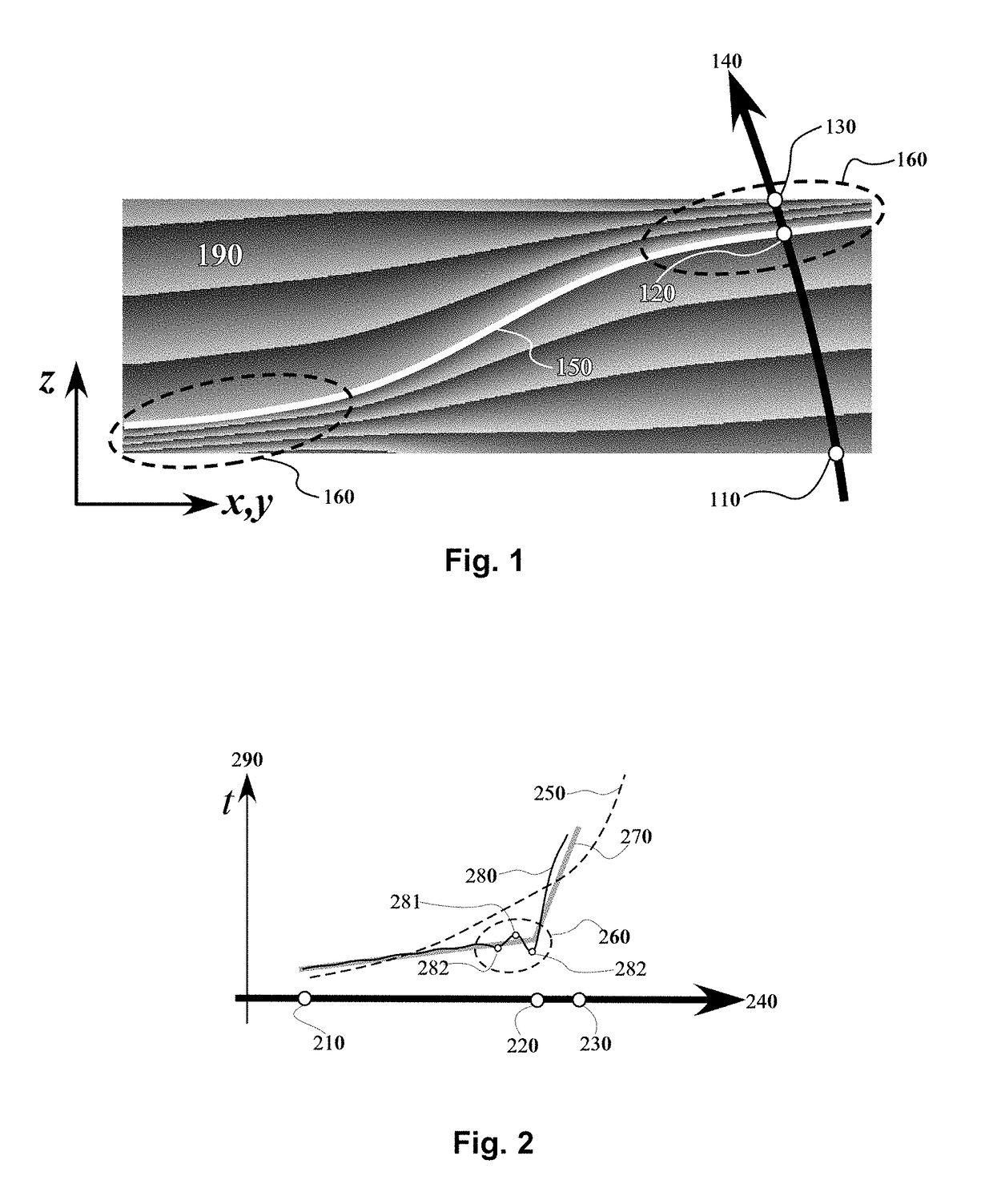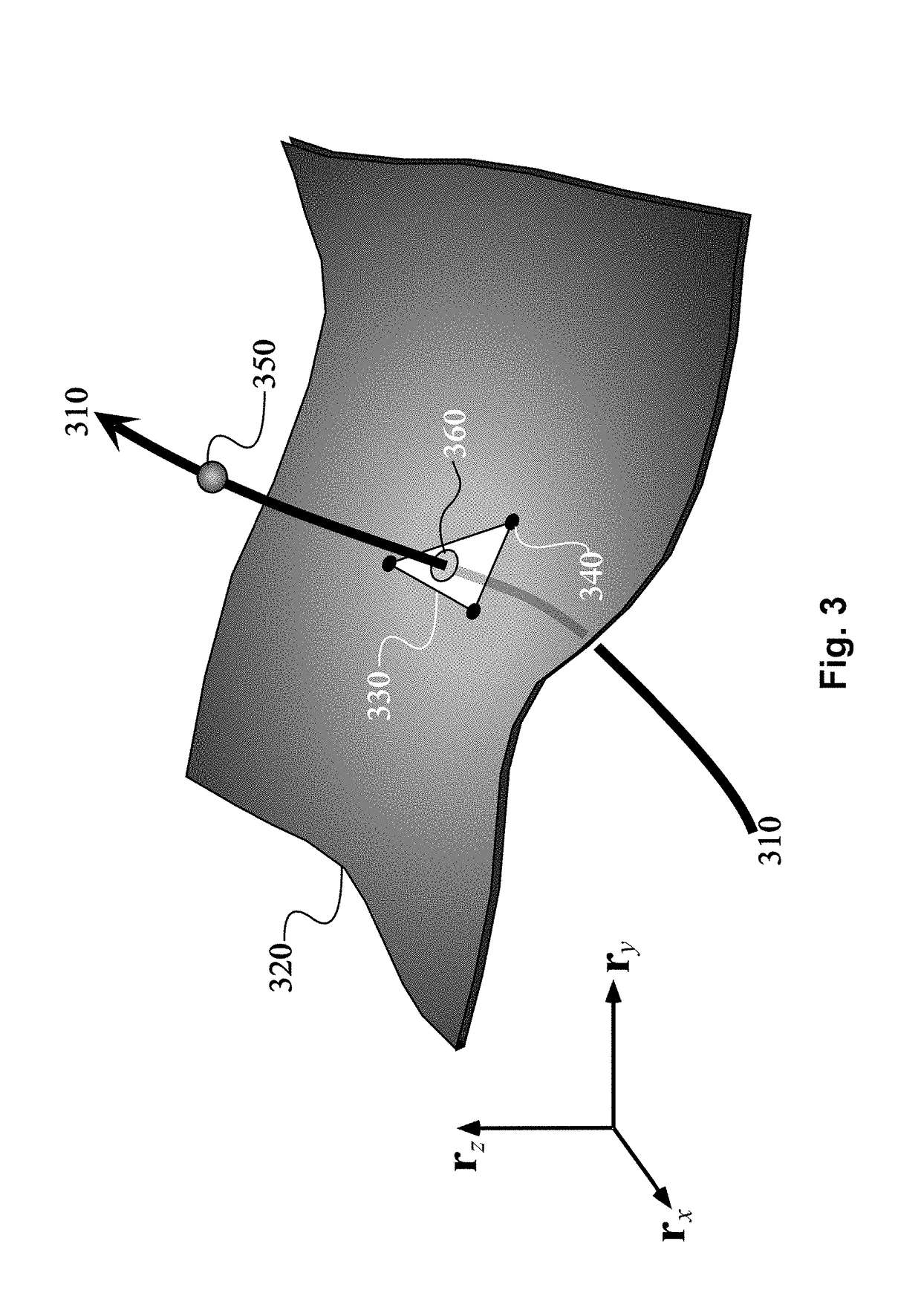Device, system and method for geological-time refinement
a geological time and refinement technology, applied in the field of stratified terrain modeling, can solve the problems of inaccurate data rendering and incorrect fitting of observed sampling points, and achieve the effects of preventing “bubbles”, accurately modeling, and simplifying computational complexity
- Summary
- Abstract
- Description
- Claims
- Application Information
AI Technical Summary
Benefits of technology
Problems solved by technology
Method used
Image
Examples
Embodiment Construction
[0008]According to an embodiment of the invention, a device, system and method is provided for refining a geological-time (and / or geological horizons), for example, of geological structures composed of geological strata bounded by geological horizons ordered according their geological time of deposition (e.g. the GeoChron model).
[0009]In the geological space as observed today, the geometry of the horizons may be intrinsically defined as level-sets of the geological-time function. Therefore, improving the geometry of the horizons in a depositional model of the subsurface may be equivalent to improving or refining the geological-time function. To solve such a model refinement problem, a new approach is proposed, referred to as “Geological-Time Refinement” (GTR). Contrary to classical 3D interpolation methods which typically generate bubbles in the presence of strong lateral variations of layer thickness, the GTR technique models a “refined” geological-time function and associated hori...
PUM
 Login to View More
Login to View More Abstract
Description
Claims
Application Information
 Login to View More
Login to View More - R&D
- Intellectual Property
- Life Sciences
- Materials
- Tech Scout
- Unparalleled Data Quality
- Higher Quality Content
- 60% Fewer Hallucinations
Browse by: Latest US Patents, China's latest patents, Technical Efficacy Thesaurus, Application Domain, Technology Topic, Popular Technical Reports.
© 2025 PatSnap. All rights reserved.Legal|Privacy policy|Modern Slavery Act Transparency Statement|Sitemap|About US| Contact US: help@patsnap.com



